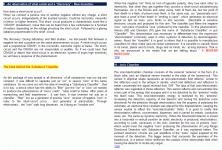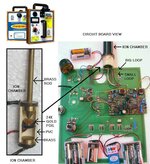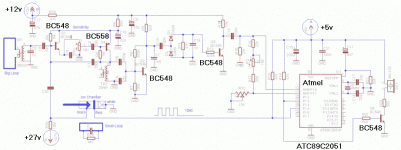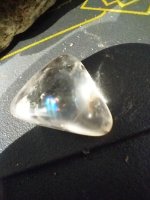Oroblanco
Gold Member
- Jan 21, 2005
- 7,838
- 9,830
- Detector(s) used
- Tesoro Lobo Supertraq, (95%) Garrett Scorpion (5%)
Re: discussion on the various possible theories that may be applicable to LrL's
Here you are:
http://wiki.answers.com/Q/What_is_the_Resonant_frequency_of_gold>
Now your evidence that there IS a resonant frequency for gold? The online sources have several different numbers assigned, without anything to substantiate them, and most appear to be sites that are promoters of LRL devices. Thank you in advance,
EDIT strike that repeated request, it is plain to see that no attempt is going to be made to address the subject of this thread, which was,
discussion on the various possible theories that may be applicable to LrL's
and what has been posted have been a retrenchment of opposing camps, a lot of technobabble intended to impress or baffle with BS those with no training in electronics or physics. As much as I would love to read possible theories as was the subject, this is going nowhere.
Good luck and good hunting to you all, thank you for your participation, and I hope you find the treasures that you seek.
Oroblanco
J__P said:Hi Oroblanco,Oroblanco said:Well my sources disagree with you on this, and say flatly that gold has no resonant frequency, and one claims it is 5 khz.
J__P wrote
Hi Oroblanco,
Can you name your sources which disagree with the fact that the nuclear magnetic resonance frequency of buried gold is not in the megahertz range, and say the NMR frequeny of elements are not variable when the magnetic field is varied?
There are several online. Can you provide some source that claims otherwise?
All of the sources say otherwise.
It is common knowledge for anyone working with NMR that the frequency depends on the magnetic field.
Check here to see all the sources: NMR FREQUENCIES
or check google for "NMR frequencies" to see all the sources.
This is why I am wondering about the several sources you referenced.
I have never seen these online sources that disagree.
Can you provide one of them?
Best wishes,
J_P
Here you are:
<rest available at:What is the Resonant frequency of gold?
There is no "resonant frequency" of gold.
http://wiki.answers.com/Q/What_is_the_Resonant_frequency_of_gold>
Now your evidence that there IS a resonant frequency for gold? The online sources have several different numbers assigned, without anything to substantiate them, and most appear to be sites that are promoters of LRL devices. Thank you in advance,
EDIT strike that repeated request, it is plain to see that no attempt is going to be made to address the subject of this thread, which was,
discussion on the various possible theories that may be applicable to LrL's
and what has been posted have been a retrenchment of opposing camps, a lot of technobabble intended to impress or baffle with BS those with no training in electronics or physics. As much as I would love to read possible theories as was the subject, this is going nowhere.
Good luck and good hunting to you all, thank you for your participation, and I hope you find the treasures that you seek.
Oroblanco









